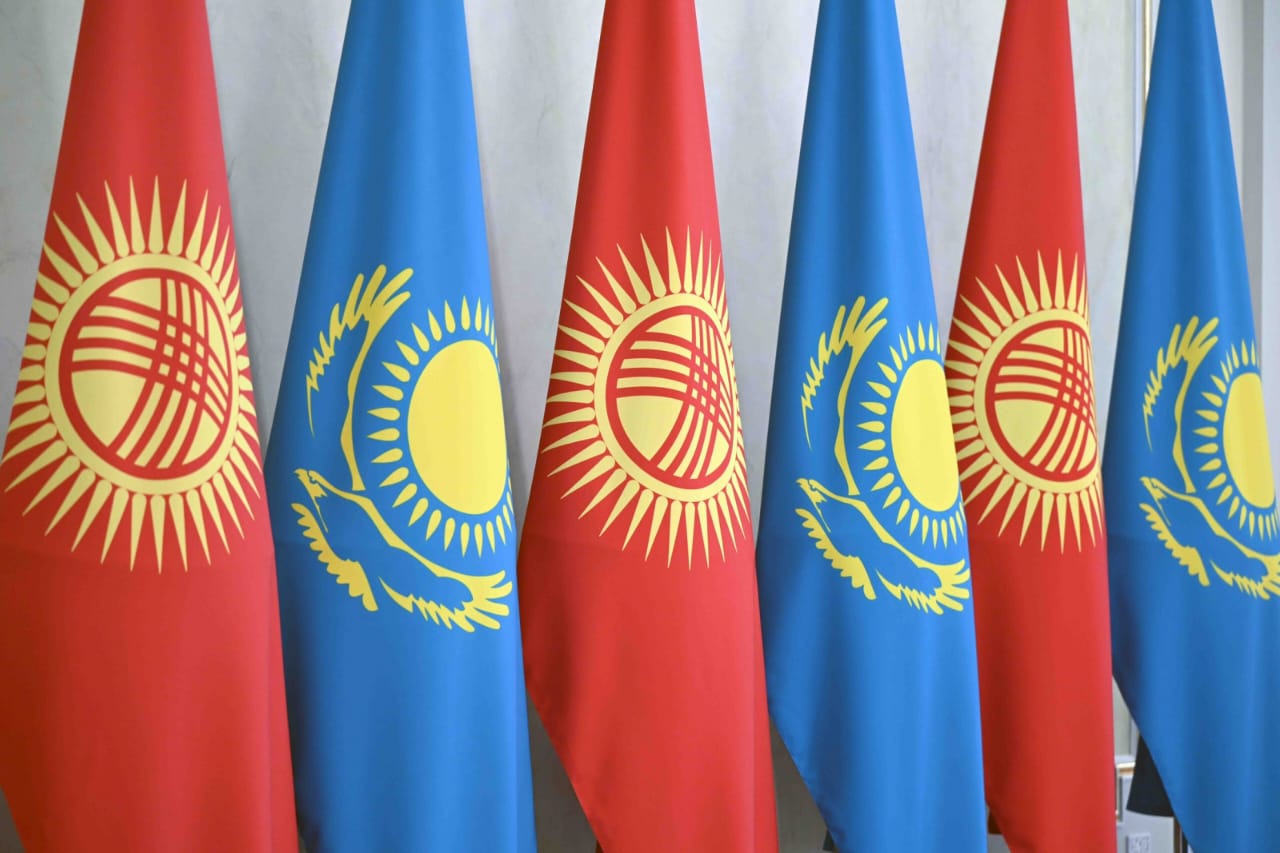BAKU, Azerbaijan, August 5. Kyrgyzstan and Kazakhstan, as contiguous sovereign entities, have cultivated a robust framework of diplomatic and economic interrelations that have progressively evolved since the formalization of their bilateral engagement in October 1992. A pivotal benchmark was attained in April 2024, as the two nations formalized a pact to enhance and broaden their strategic partnership during the official visit of Kyrgyz President Sadyr Zhaparov to Kazakhstan. Synergistic collaboration between the two sovereign entities is progressively intensifying, characterized by an escalation in bilateral trade dynamics and the initiation of collaborative ventures in various sectors. An official diplomatic engagement involving Kazakhstan’s President Kassym-Jomart Tokayev is anticipated in Kyrgyzstan in 2025; strategic preparations for this high-level visit were deliberated by Zhaparov alongside Kazakhstan’s Foreign Minister Murat Nurtleu during their discussions in August in Cholpon-Ata.
One clear sign of the closer ties is the rising trade volume. According to Kyrgyzstan’s National Statistics Committee, trade between the two countries reached $566.4 million from January through May 2025, up 9 percent compared to the same period last year. Kazakhstan remains one of Kyrgyzstan’s main foreign trade partners, ranking third after China and Russia, accounting for 9.8 percent of the country’s total trade turnover. This reflects the economic interdependence and mutual importance of the two economies.
Nonetheless, the equilibrium of the trade balance exhibits significant asymmetry. The Kyrgyz export metrics to the Kazakhstan experienced a contraction of 13 percent on a year-over-year basis, culminating in a total valuation of $142.6 million. Nevertheless, the proportion of Kyrgyz exports attributed to Kazakhstan is noteworthy at 17.1 percent, underscoring the critical role of the Kazakh market for Kyrgyz manufacturers. Concurrently, the influx of goods from Kazakhstan surged by 19.2 percent, culminating in a total valuation of $423.8 million, thereby constituting 8.6 percent of Kyrgyzstan’s aggregate import portfolio.
The main imports from Kazakhstan include consumer goods and industrial products such as mineral and carbonated water with sugar ($22.9 million), wheat flour ($17.2 million), wheat ($13.8 million), and cement ($7.1 million). On the other hand, Kyrgyzstan mainly exports ores and concentrates of precious metals ($31.1 million), plastics and related products ($27.4 million), clothing ($11.8 million), tractors ($11.2 million), and construction materials ($9.6 million) to Kazakhstan.
Furthermore, the nations are setting their sights on boosting their trade turnover to a whopping $3 billion by 2030. With trade already hitting the ground running at $1.5 billion in 2024, this target seems well within reach.
Investment ties are experiencing an upward trajectory. During
the inaugural quarter of 2025, Kazakhstan's direct capital infusion
into Kyrgyzstan reached an impressive $49.9 million, representing a
substantial tripling of the fiscal allocation compared to the
preceding annum. Kyrgyzstan has significantly amplified its capital
allocation towards Kazakhstan, deploying $27.5 million in the
corresponding timeframe, which represents a quintuple increase
compared to fiscal year 2024.
Monetary interconnections are bolstered by consistent capital flows
across national borders. In May 2025, remittance flows from
Kazakhstan to Kyrgyzstan reached approximately $1 million,
positioning Kazakhstan as the second-largest contributor of
financial transfers within the CIS framework, trailing only behind
Russia. In a parallel transaction, a sum of $390,000 was remitted
from Kyrgyzstan to Kazakhstan, underscoring robust interpersonal
and commercial linkages among the populace of both nations.
In addition to economic exchanges and capital flows, the
bilateral relationship encompasses collaborative efforts in pivotal
sectors, notably in the energy domain. Kazakhstan, Kyrgyzstan, and
Uzbekistan have formalized a strategic accord to initiate the
construction of the Kambarata-1 hydropower facility on the Naryn
River, thereby enhancing regional energy infrastructure and
fostering collaborative development initiatives. This significant
initiative, boasting a capacity of 1,860 megawatts and an
investment of $3.5 billion, is projected to yield an annual output
of 5.6 billion kilowatt-hours of electrical energy. Kazakhstan
fundamentally requires the facility to facilitate the provision of
irrigation water throughout the summer season.
Moreover, in February 2025, Kazakhstan and Kyrgyzstan formalized a
strategic roadmap aimed at the development of small-scale
hydropower facilities within Kyrgyzstan, thereby enhancing regional
developmental synergies.
Logistics is another key area of cooperation. The countries plan to establish an industrial trade and logistics complex at their border and build a new road linking Almaty and Cholpon-Ata. These projects aim to boost transit potential, simplify the movement of goods and people, and stimulate tourism, especially important for border regions.
The Almaty-Bishkek Economic Corridor initiative, which has been
in progress since 2014 as part of the Central Asia Regional
Economic Cooperation (CAREC) framework, aims to optimize transit
efficiency between the urban centers, establish a unified
marketplace for healthcare, educational, and tourism sectors, and
enhance the logistics of agricultural commodities to wholesale
distribution channels.
Hydrological collaboration is additionally integrated into the
strategic framework. In accordance with the 2025 accord, Kyrgyzstan
is set to deliver an allocation of 580 million cubic meters of
hydric resources from the Chu and Talas river systems, which are
critical for agronomic activities in the southern region of
Kazakhstan. Notwithstanding intervals of diminished hydrological
throughput, both parties persist in their dedication to
constructive discourse and mutual concession.
There are still a few bumps in the road, particularly with border delays for freight transport, which really drives home the point that we need to tighten up our customs procedures. However, tackling these practical issues is all in a day's work for closer integration.
Overall, Kyrgyzstan and Kazakhstan are moving toward deeper economic and strategic ties. Their goal of increasing trade turnover to $3 billion seems realistic given current progress. Collaborative initiatives, escalating capital influx, robust commercial linkages, and a unified strategic outlook for forthcoming endeavors establish a formidable framework for enhanced synergy.







